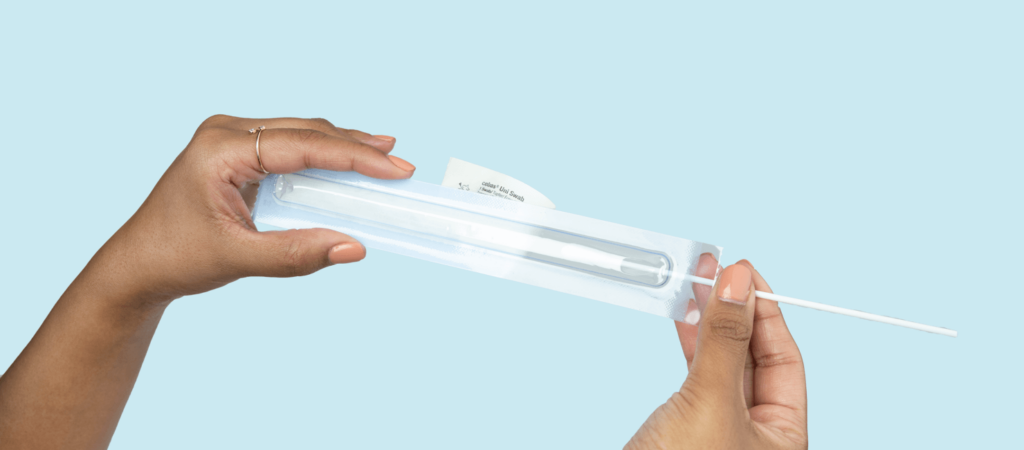All About STIs: Chlamydia
You’ve probably heard of chlamydia, but do you actually know what it is? As one of the most common sexually transmitted infections (STIs) affecting American men and women, chlamydia should definitely be on your radar. Left untreated, it can have serious consequences, especially for fertility. Get the facts so you can stay safe from this infection.
What Is Chlamydia?
Chlamydia is a very common STI caused by the bacterium Chlamydia trachomatis. It can be spread through all kinds of sex, including oral, vaginal, and anal. Once inside your body, this bacteria can cause inflammation and scarring, which may eventually cause infertility in women and put them at greater risk of ectopic pregnancy, a dangerous condition in which a fetus starts to grow outside the uterus.
What Are the Symptoms of Chlamydia?
Chlamydia is sometimes called “the silent infection” because there often aren’t symptoms to tip you off that you’ve been infected. If women experience symptoms, they might include abnormal vaginal discharge or bleeding, pain when urinating, or lower back pain. Men might experience a discharge from the penis, burning when urinating, or pain or swelling in one or both testicles. But chlamydia symptoms are pretty rare. Nurx provider Heather Harvey says, “The most common symptom of an STI is no symptoms,” and that’s definitely true of chlamydia.
Nurx offers prescription cold sore and genital herpes treatment for as little as $0 with insurance or $15 per month without insurance.
Who’s at Risk for Chlamydia?
Anyone can get chlamydia, and more than 1.1 million American women received a diagnosis of chlamydia in 2017, making it one of the most common STIs in the country. Statistics from 2017 estimate that one in 20 sexually active women between the ages of 14 to 24 has chlamydia, and the CDC recommends that all sexually active women under 25 get tested every year. About half as many men as women receive a chlamydia diagnosis, but that is likely because women are screened more often, because of chlamydia’s potential to hurt fertility in women.
Chlamydia in the Rectum and Throat
Many people don’t realize that both men and women can catch a chlamydia infections in their throats or rectums, from oral or anal sex. Symptoms of rectal chlamydia can include rectal pain, discharge, or bleeding. A throat infection can cause a sore throat, but of course so can many other things. The best way to know if you have a chlamydia infection in your rectum or throat is to get tested.
How to Get Tested for Chlamydia
Because chlamydia often doesn’t cause any symptoms, it’s important to get screened regularly — at least once a year if you’re sexually active and don’t know a partner’s status, and more often if you have new partners. Unfortunately, many doctors and gynecologists don’t automatically screen for chlamydia, so be sure to ask.
You can also do a chlamydia test at home. Chlamydia tests are included in all three of the Nurx STI Home Test Kits, which allow you to check for chlamydia and other STIs from the privacy of home. The Full Control Kit includes throat and rectal swabs to check for both chlamydia and gonorrhea in those areas. The Healthy Woman Kit contains tests for vaginal and throat chlamydia, as well as tests for other STIs (like trichomoniasis) likely to affect female bodies.
How Is Chlamydia Treated?
The good news about chlamydia: It’s simple to treat with oral prescription antibiotics like doxycycline or azithromycin, which kill the bacteria causing the infection. Some can be treated with a single-dose regimen, but if your prescription contains multiple pills it’s important that you finish them. If you stop early, you may not completely eliminate the infection. But keep in mind that while these medications cure chlamydia, they cannot heal any damage that the infection has already done to your reproductive system. That’s why it’s so essential to be screened regularly if at risk. If you test positive for chlamydia after using a Nurx STI Home Test Kit a member of our medical team can (in most cases) prescribe treatment for you.
Unfortunately, it’s common for women to experience a repeat chlamydia infection after treatment, often because their partners don’t receive treatment and wind up passing the infection back. So when a woman gets a diagnosis, she should tell any partners to be tested and treated with their own course of antibiotics. It’s important to make sure you and your partners have completed the antibiotics before resuming sexual activity. Doctors recommend all women diagnosed get retested for chlamydia about three months after their initial treatment to make sure the infection is gone.
How Can You Prevent Chlamydia?
Condom use is the best way to protect yourself from chlamydia. If you’re a woman using a pill like Seasonique or a patch like Ortho Evra to prevent pregnancy, you’ll still need to wear a condom to get protection from STIs. You’ll also want to avoid douching, as this can kill your vagina’s healthy bacteria and make you more susceptible to Chlamydia trachomatis and other STIs.
Although chlamydia and other STIs might sound scary, the only thing to be scared of is not knowing you have one. Getting tested, and treated if necessary, can protect your reproductive health without sacrificing a satisfying sex life.
This blog provides information about telemedicine, health and related subjects. The blog content and any linked materials herein are not intended to be, and should not be construed as a substitute for, medical or healthcare advice, diagnosis or treatment. Any reader or person with a medical concern should consult with an appropriately-licensed physician or other healthcare provider. This blog is provided purely for informational purposes. The views expressed herein are not sponsored by and do not represent the opinions of Nurx™.







